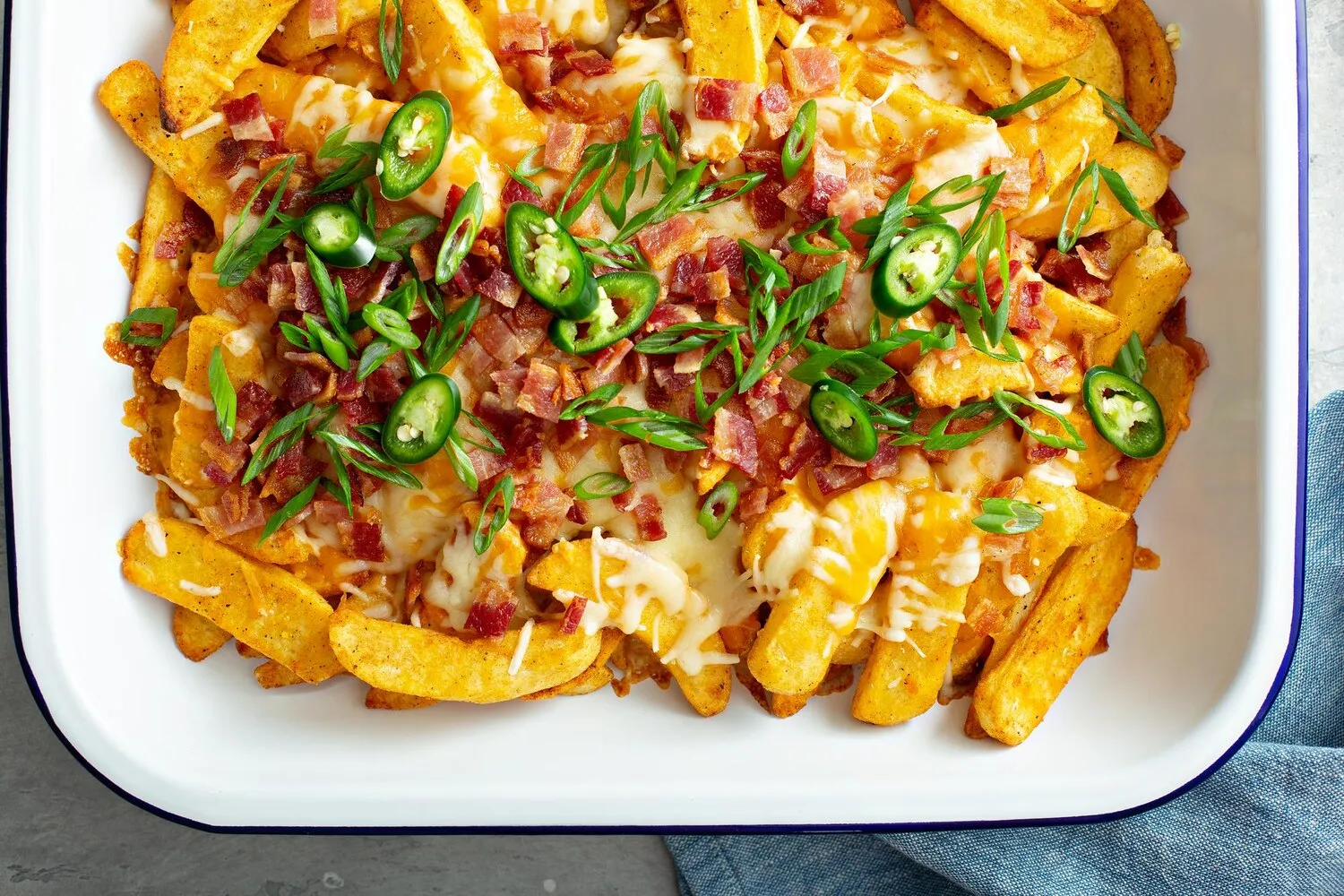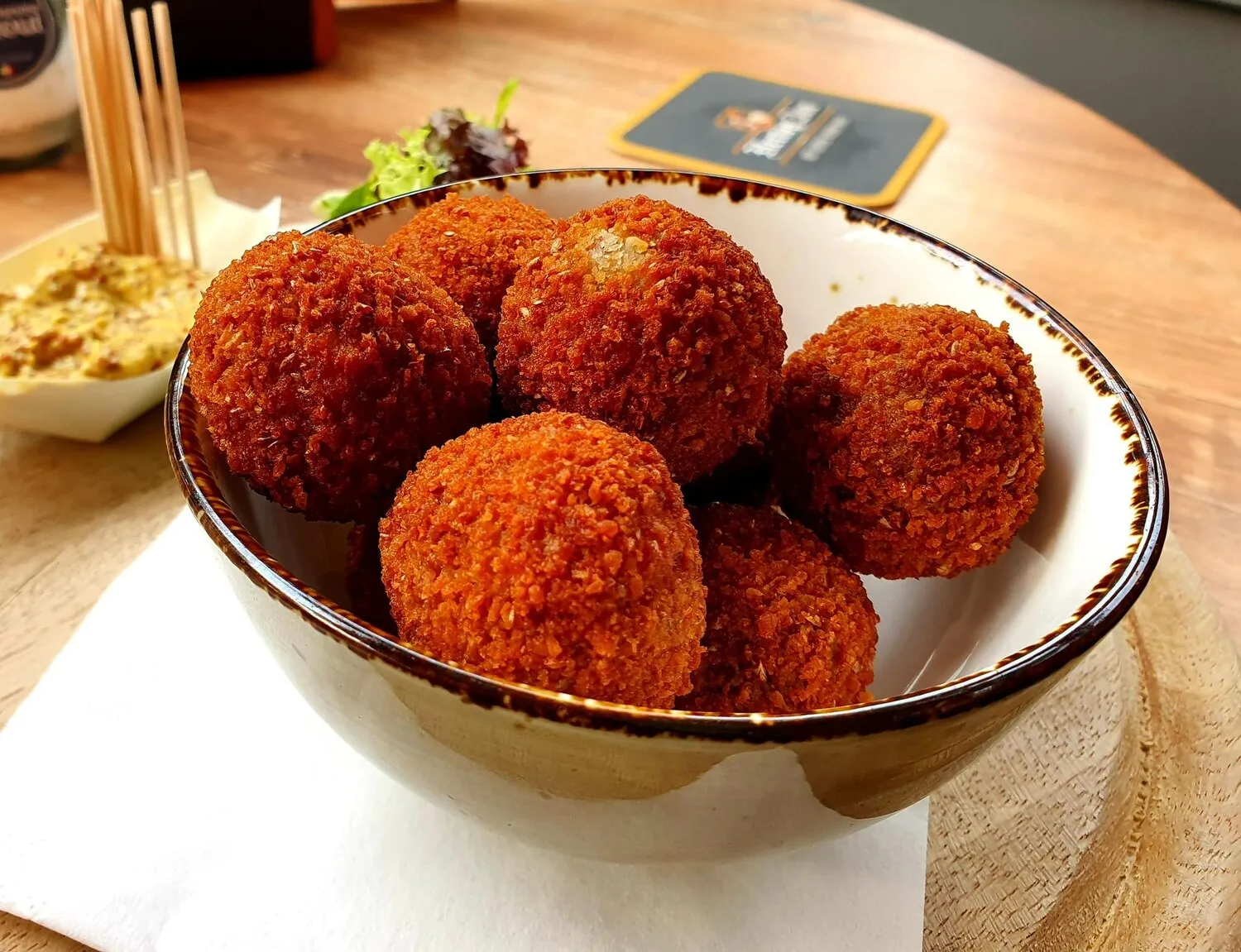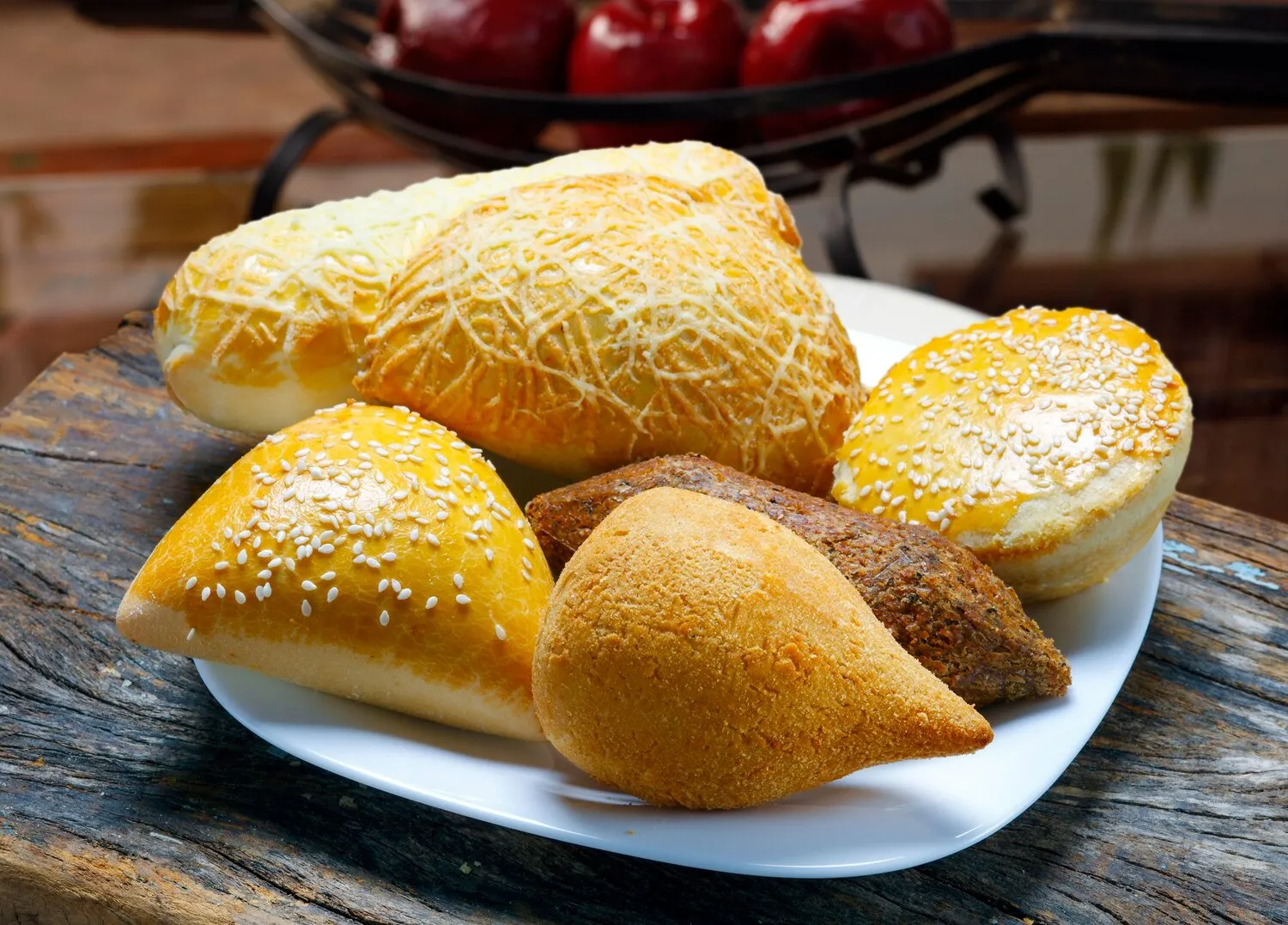
Snacks (Frikandel, Kroket, etc.)
A variety of typical Belgian and Dutch snacks commonly served with fries, such as Frikandel and Kroket.
Nutrition Facts
* The % Daily Value (DV) tells you how much a nutrient in a serving of food contributes to a daily diet. 2,000 calories a day is used for general nutrition advice.
The history of these snacks is intertwined with the development of fast food culture in the Netherlands and Belgium. After World War II, as economies recovered, the demand for quick and affordable meals increased. The frikandel and kroket were developed as convenient and tasty options, initially in local butcher shops and snack bars before becoming mass-produced.
These snacks are deeply ingrained in Dutch and Belgian food culture, typically enjoyed as quick meals, after-work snacks, or during social gatherings. They are staple offerings at 'snackbars' and festivals.
Snackbars
Snackbars (or 'frituur' in Belgium) are ubiquitous in both countries, serving as central hubs for enjoying these fried delicacies. They're often meeting points for friends and family.
Sauces
The experience isn't complete without a selection of sauces. Popular choices include mayonnaise (often with variations like 'fritessaus', a slightly sweeter version), curry ketchup, mustard, and peanut sauce (sataysaus).
Festivals and Events
These snacks are a common sight at festivals, markets, and sporting events, providing a quick and satisfying meal on the go.
Automat
In the Netherlands, the 'Febo' automat is a famous vending machine where you can buy these snacks from small window compartments.
These snacks are characterized by savory, meaty, and often deep-fried flavors, with a variety of textures ranging from smooth to crispy.
The frikandel is a skinless, dark-colored sausage made from a blend of mechanically separated meat (chicken, pork, and beef), breadcrumbs, spices (nutmeg, mace, white pepper, onion powder), and flavor enhancers. It has a savory and slightly spicy flavor. The kroket consists of a thick ragout filling (typically beef or veal, but also chicken, shrimp or vegetarian options exist) coated in breadcrumbs and deep-fried. The filling is creamy and rich, with a contrasting crispy exterior. Other common snacks include bitterballen (small, round kroketten), kaassoufflé (cheese-filled puff pastry), and various types of 'loempia' (spring rolls) - all offering similar flavor profiles of savory fillings and crispy fried exteriors.
Frying Temperature
Ensure the oil is hot enough (around 175-180°C or 350-360°F) for optimal crispiness and to prevent the snacks from absorbing too much oil.
Sauce Combinations
Experiment with different sauce combinations to find your favorite. A frikandel 'speciaal' (special) is a must-try: it's a frikandel sliced open and topped with mayonnaise, curry ketchup, and chopped raw onions.
Accompaniments
While often enjoyed on their own or with fries, these snacks can also be paired with bread rolls or served alongside salads for a more balanced meal.
Quality Matters
The quality of the meat and ingredients significantly affects the taste. Seek out reputable snackbars or brands known for using high-quality ingredients.
Explore additional Snacks dishes and restaurants
Explore SnacksDiscover top dining spots and culinary experiences in Nazareth.
Explore NazarethLearn more about the food culture, restaurant scene, and culinary heritage of Belgium.
Explore Belgium

